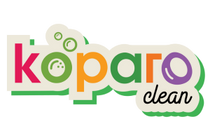
What are sponge wipes and what are their best uses?
Sponge Wipes
Among the most common cleaning materials that keep homes clean are sponge cloths. Koparo sponge wipes are made of a biodegradable and durable mixture of cellulose and cotton. The resulting cloth is extremely absorbent and so, so strong. It can absorb 13 times its weight in liquid, but easily wrings, minimizing bacteria and mildew growth. And it’s machine-washable up to almost 300 times — which means that a single sponge cloth can replace up to 14 rolls of paper towels.

What is a cellulose sponge?
Some of the most popular cleaning sponges on the market are made of manufactured cellulose. Cellulose sponges have little holes that are designed to capture and keep liquid while you use them. They can withstand some comparatively difficult cleaning tasks. An alternative to a flatter cellulose sponge is a cellulose wipe. These flat, rectangular sponges can be used for polishing and dusting in place of paper towels. When properly cared for, they can be reused for up to six months and are biodegradable.
Cellulose sponges and wipes can be used to clean a variety of surfaces, such as:
- Dishes
- Kitchen countertops
- Kitchen sinks
- Appliances
- Floors
- Bathroom countertops and sinks
- Showers and tubs
- Tile
- Glass

What are cellulose sponges made from?
Cellulose sponges, though man-made, are much more eco friendly than plastic ones because they undertake a less toxic manufacturing process, biodegrade, and compost in landfills. Cellulose is also referred to as non-petroleum, recyclable vegetable fibre. It is a 100% natural material that is made from wood fibres, which are then transformed into wood pulp, a natural fibre.
Because they are usually treated with a solution to make them pliable, these sponges are soft inside their sealed box. Additionally, this process prevents bacteria from growing inside the package before it is purchased.
Pros
Cellulose sponges are great for use on dishes, bathroom surfaces, and daily spills. You can select one vibrantly colored sponge for one task and the other for another one in order to differentiate them for their intended use.
These sponges are available in fun shapes like rectangles, curving shapes, and ovals which fit your hand. Also, you can cut them into smaller pieces to extend the usefulness of each sponge. 100% cellulose or plant-based products are your best choice for the environment because they are more eco-friendly and contain no polymer at all.
Cons
The higher cost of cellulose sponges compared to plastic sponges is one of their drawbacks. This does not, however, imply that they are very expensive. They are reasonably priced but should be tossed away if they become dirty or if you are unable to thoroughly remove the dirt. Cellulose sponges are difficult to completely clean away since they tend to accumulate residue and bacteria. Due to this flaw, the sponge lasts less time before breaking down or smelling. Never clean up spilled raw egg or raw meat liquids with cellulose sponges. A disposable paper towel is a superior choice when food germ transfer is a concern.

Clean sponges regularly
A cellulose sponge or wipe can be used repeatedly for up to six months if it's kept clean. However, if you use your sponge roughly and with frequent care, it might only last a month. After each use, thoroughly rinse sponges to extend their life. Leave them completely open to the air to dry.
There are several ways to remove bacteria from the sponge:
Vinegar: For around five minutes, soak your cellulose sponge in a solution of full-strength vinegar, rinse it, and allow it to air dry.
Dishwasher : Also, you can place sponges on the top rack of the dishwasher and run a cycle.
Microwave : A wet sponge can be warmed inside the microwave for around 30 seconds. In order to keep the sponge from drying out, always ensure it is.
Bleach : Spend two minutes soaking the sponge in a mixture of one part of bleach to nine parts of water. Rinse it off and let it air dry.
Use different sponges for different tasks as well. For example, you should keep the sponge you use to wash dishes and the sponge you use to clean up spills on your surfaces apart. While the kitchen sponge should be kept in the kitchen, the sponge used for bathroom countertops should be kept in the bathroom.
Disposal
Any cellulose sponge that is still dirty after being cleaned or starts to smell should be thrown away. These indications of microbial growth and mould contamination may be transferred to your meals and dishes. 100% plant-based cellulose sponges can be disposed of in the recycling or compost bin. Some cellulose sponges, however, include chemicals called polyfill and shouldn't be placed in the compost or recycling bin. These ought to be disposed of in a standard trash container. To hasten the decomposition process, cut the sponge into little pieces before throwing it in your compost pile.
What are the environmental benefits of cellulose sponges?
Since cellulose sponges are created without any chemicals like polyurethane or triclosan, towards the end of their useful lives, they decompose when buried and biodegrade. To complete the circle of life, just dispose of them at the end of their lives in your compost bin, green trash bin, or garden.









